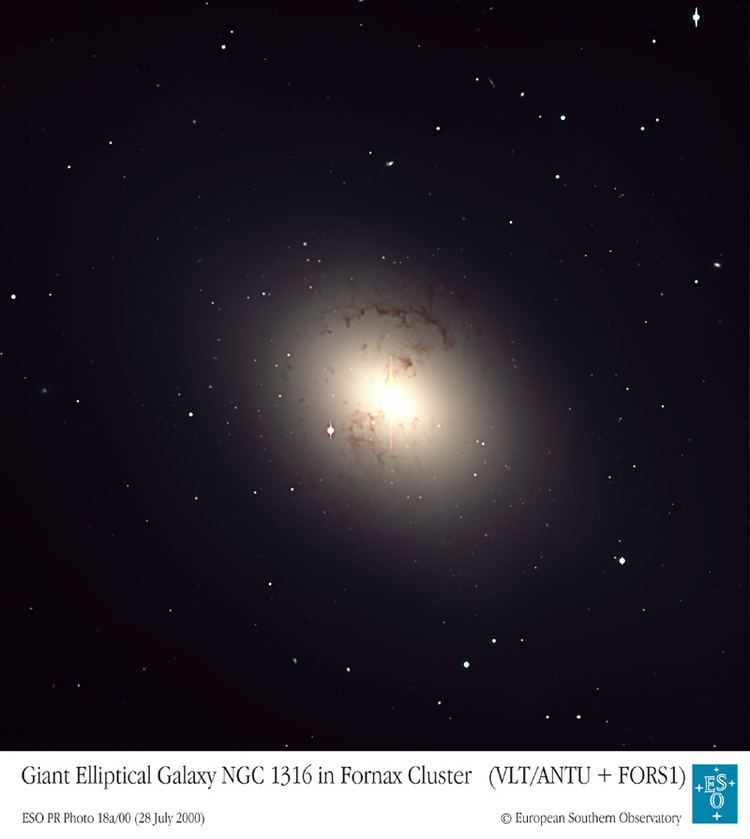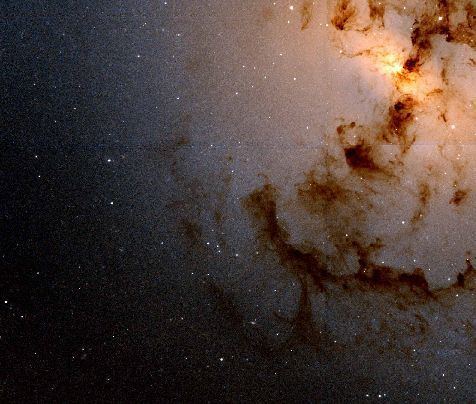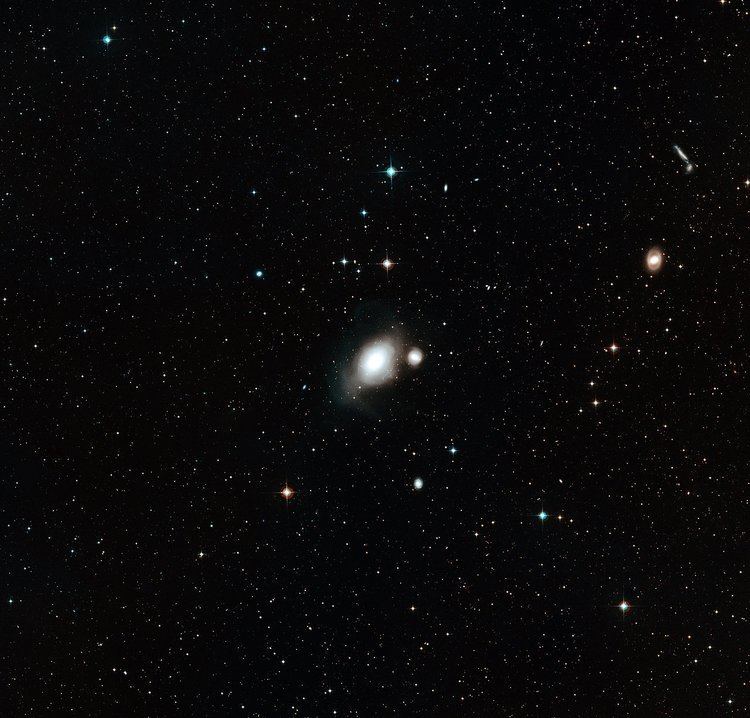Right ascension 03 22 41.7 Redshift 1760 ± 10 km/s Apparent size (V) 12′.0 × 8′.5 | Declination −37° 12′ 30″ Type (R')SAB(s)0 Magnitude 9.4 Apparent magnitude (V) 9.4 | |
Distance 62.0 ± 2.9 Mly (19.0 ± 0.9 Mpc) Similar NGC 1317, Fornax Cluster, NGC 1399, NGC 1365, NGC 1097 | ||
Zooming in on the galaxies ngc 1316 and 1317
NGC 1316 (also known as Fornax A) is a lenticular galaxy about 60 million light-years away in the constellation Fornax. NGC 1316 is a radio galaxy. It is the fourth-brightest radio source in the sky (as seen at 1400 MHz).
Contents
- Zooming in on the galaxies ngc 1316 and 1317
- Panning across the galaxies ngc 1316 and 1317
- Structure and formation
- Companions and environment
- Distance estimates
- References

Panning across the galaxies ngc 1316 and 1317
Structure and formation

François Schweizer studied NGC 1316 extensively in the late 1970s. He found that the galaxy appeared to look like a small elliptical galaxy with some unusual dust lanes embedded within a much larger envelope of stars. The outer envelope contained many ripples, loops, and arcs. He also identified the presence of a compact disk of gas near the center that appeared inclined relative to the stars and that appeared to rotate faster than the stars. Based on these results, Schweizer suggested that NGC 1316 was built up through the merger of several smaller galaxies. These merger events may have fueled the central supermassive black hole, that has a mass estimated in 130-150 million of solar masses with gas, causing the galaxy to become a radio galaxy. He also states that NGC 1316 is comparable to the giant elliptical galaxies found in the centers of other clusters of galaxies. Using spectroscopy of its brightest globular clusters, the merger is estimated to have occurred ~3 billion years ago.

It has been proposed too that NGC 1316 may be a galaxy in evolution that eventually will become a Sombrero-like system dominated by a large bulge
Companions and environment

NGC 1316 is located within the Fornax Cluster, a cluster of galaxies in the constellation Fornax. However, in contrast to Messier 87, which is a similar elliptical galaxy that is located in the center of the Virgo Cluster, NGC 1316 is located at the edge of the Fornax Cluster.

NGC 1316 appears to be interacting with NGC 1317, a small spiral galaxy to the north. However, that small spiral galaxy does not appear to be sufficiently large enough to cause the distortions seen in the structure of this galaxy.
NGC 1316 was host to two Type Ia supernovae: 1980N(Ia) and 1981D(Ia).
Distance estimates
At least two methods have been used to estimate the distance to NGC 1316: surface brightness fluctuation (SBF) in 2003 and planetary nebula luminosity function (PNLF) in 2006. Being a lenticular galaxy, it is not suitable to apply the cepheid variable method. Using SBF, a distance estimate of 20.0 ± 1.6 Mpc was computed. Using PNLF, 45 planetary nebula candidates were located and a distance estimate of 17.9 +0.8
−0.9 Mpc was computed. Averaged together, these two distance measurements give a combined distance estimate of 62.0 ± 2.9 Mly (19.0 ± 0.9 Mpc).
